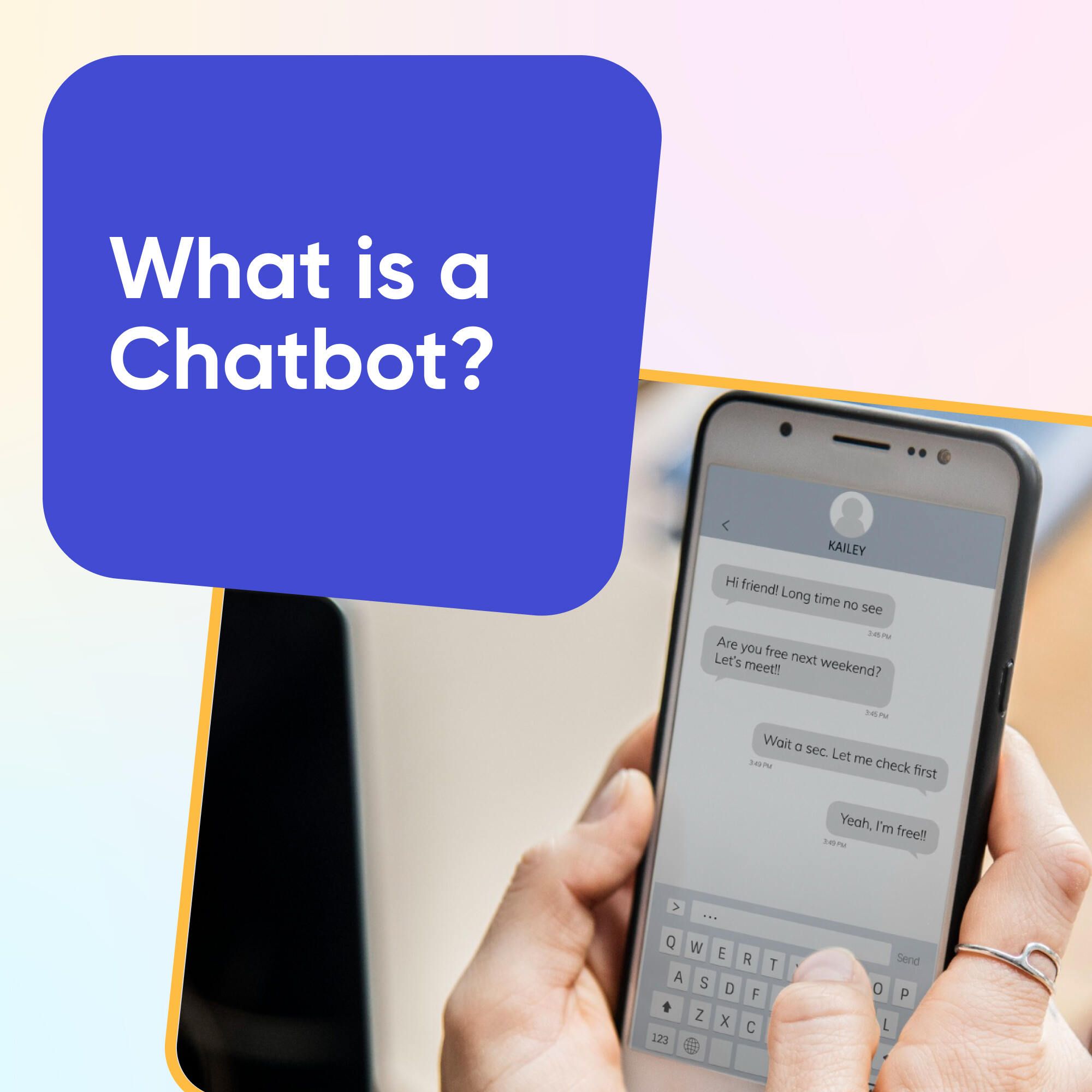The complete guide to the world of chatbots. In this blog, we explore the world of chatbots, examining what they are, how they work, and their immense value for both businesses and consumers. We'll delve into their various use cases, limitations, and the potential of AI-powered chatbots. And learn how to create your chatbot in just 30 minutes!
What is Meant By Chatbot?
A Chatbot is a computer program that simulates human conversation either verbal or written, allowing humans to interact with bots just like a real human. Chatbots can be simple such as answering questions based on the data they are trained with or be powered by artificial intelligence, also known as conversational AI, that understands questions and automates responses.
How do Chatbots Work?
At one or another point, you’ve interacted with a chatbot while browsing websites online. Be it for tracking a prepaid order or asking questions before confirming an order. All these are instances where trained chatbots were answering your queries.
Chatbots have a flow by which they intake user input, process and respond to them. Primarily chatbots were built only using a set limit of questions with pre-written answers. These FAQs required users to follow the prompts that the chatbots were trained on and build the conversation.
Here’s a simple step-by-step breakdown of how chatbots work:
- User Input: The user inputs a message by typing or speaking.
- Natural Language Processing (NLP): The chatbot breaks down the input into smaller parts (tokens), identifies the user's intent from these tokens and extracts specific information (entities) from the input.
- Dialogue Management: The chatbot keeps track of the conversation context to provide coherent responses. Based on the identified intent and entities, the chatbot generates a response.
- Machine Learning: Many chatbots use machine learning algorithms to improve over time. They learn from past interactions to provide more accurate and relevant responses in the future.
- Delivery: Finally, the chatbot delivers the response to the user through the same interface (text or voice).
AI-Powered Conversational Chatbots
They are much more sophisticated and leverage natural language processing (NLP), natural language understanding, and machine learning (ML) which helps them learn and evolve on the go. Their interactions feel just like human agents and can be used for businesses with complex services.
Value of Chatbots: Chatbots for Business & Customers
Chatbots offer several benefits, making them an invaluable tool for businesses and users alike. Unlike human agents, chatbots can manage multiple conversations simultaneously. This capability significantly reduces wait times for users, as they no longer need to queue for assistance.
Chatbots are operational 24/7, which is beneficial for businesses with a global customer base, where users may be in different time zones. Users can get help whenever they need it, without having to wait for business hours. This chatbot benefit enhances customer satisfaction and ensures that issues are addressed promptly, regardless of when they arise.
Chatbots are cost-effective. By automating routine and repetitive tasks, chatbots can significantly reduce the need for human agents. This automation allows businesses to allocate their human resources to more complex and value-added activities that require human intervention.
On the other hand for customers, chatbots offer instant assistance, convenience, and personalization, which significantly enhance the user experience. According to a survey by Drift, 55% of consumers are more likely to use a chatbot if it provides instant responses to their inquiries. This immediate assistance is crucial in today's fast-paced world, where users expect quick and efficient service.
Why Do We Need Chatbots?
One of the primary reasons chatbots are indispensable is their ability to provide quick and efficient service. In today's fast-paced digital world, consumers expect immediate responses to their inquiries.
Moreover, chatbots alleviate the burden on customer service teams by managing simple and repetitive inquiries. They can automate tasks such as booking appointments, processing orders, and managing reservations, which reduces the administrative load on staff and minimizes the risk of human error.
Chatbots also offer the advantage of personalization. For instance, in an e-commerce setting, a chatbot can suggest products based on a user’s previous purchases or browsing history, improving user experience and thus higher engagement and conversion rates.
Common Chatbot Uses
Chatbots are commonly used to improve customer services and push self-service to cut down repetitive tasks within internal teams or customer-facing teams.
On the business side, chatbots offer significant advantages by automating routine tasks and enhancing operational efficiency. Marketers use AI-powered chatbots to streamline operations and personalize customer interactions. HR teams use chatbots to enable self-service for employees.
For consumers, chatbots offer convenience, speed, and personalization. They provide instant assistance, ensuring users receive quick responses to their queries at any time of the day. Banking, retail, travel and hospitality, and food and beverages sector consumers use chatbots to get quick information without having to wait in a queue to talk to a customer agent.
Limitations of Chatbots
Despite their numerous advantages, chatbots do have limitations that can impact their effectiveness. Traditional chatbots, in particular, often struggle with complex queries, maintaining context and they lack emotional intelligence. They are programmed to handle specific scenarios and can find it difficult to provide accurate responses when faced with questions outside their predefined knowledge base. This can lead to frustration for users.
However, AI-powered chatbots are addressing many of these limitations and significantly enhancing the capabilities of chatbot technology. Despite these advancements, AI-powered chatbots do require large amounts of data to function effectively, raising privacy and security concerns due to potential data breaches and misuse of personal information.
AI-Powered Chatbots
AI-powered chatbots are advanced chatbots that use machine learning and natural language processing (NLP) to understand and interpret user inputs more accurately. They are good at analyzing large amounts of data, tracking the flow of dialogue, and understanding the context of previous exchanges, which makes them continuously improve their responses.
How to Create A Chatbot?
Though chatbots and their process look complicated, creating a chatbot is not. With many available chatbot platforms and their easy integrations, anyone can create a chatbot. You need to know the purpose of having a chatbot, some chatbots are for internal operations while others might be purely oriented toward customers. Knowing this will help you choose the right chatbot platforms and better serve your needs.
The truth is, you don’t need a developer to create a chatbot. Any business owner or user can create a chatbot and integrate it into existing systems in less than 30 minutes.
Need help with creating a chatbot for your business? Contact us and create your chatbot be it for any business in just a day.
The Future of Chatbots
In the age of AI tools, chatbots will enhance customer interactions with businesses, and increase operational efficiency, human capabilities, and ultimately customer experience (CX). With enhancements in NLP and ML, chatbot interactions will become more intelligent and capable of better understanding human emotions and complexities. Rapid development of AI and 5G technology will soon make voice and video conferencing in chatbots possible.
Create your AI-powered chatbot for your business in less than 30 minutes!
FAQs on Chatbots
What is a Chatbot?
A chatbot is a conversational tool that uses natural language processing designed to simulate human conversation and assist users in completing tasks such as answering questions, making purchases, or booking appointments. They help businesses with automating repetitive tasks and boosting the efficiency of customer support teams
What are the benefits of using chatbots for businesses?
Chatbots automate routine tasks, reduce operational costs, provide 24/7 customer support, enhance service consistency, and personalize customer interactions based on user data.
What are some limitations and risks associated with chatbots?
Chatbots may struggle with complex queries, lack emotional intelligence, require large amounts of data, and can have biases. They also raise privacy and security concerns.
How to Create A Chatbot?
- Define the chatbot's purpose and target audience.
- Choose a platform.
- Decide the conversation flow, including possible user inputs and chatbot responses.
- Develop the chatbot using the chosen platform, incorporating natural language processing (NLP) for understanding user queries.
- Train the chatbot with relevant data to improve accuracy and performance.
- Test the chatbot extensively to identify and fix any issues.
- Deploy the chatbot on your desired channels (e.g., website, social media).







